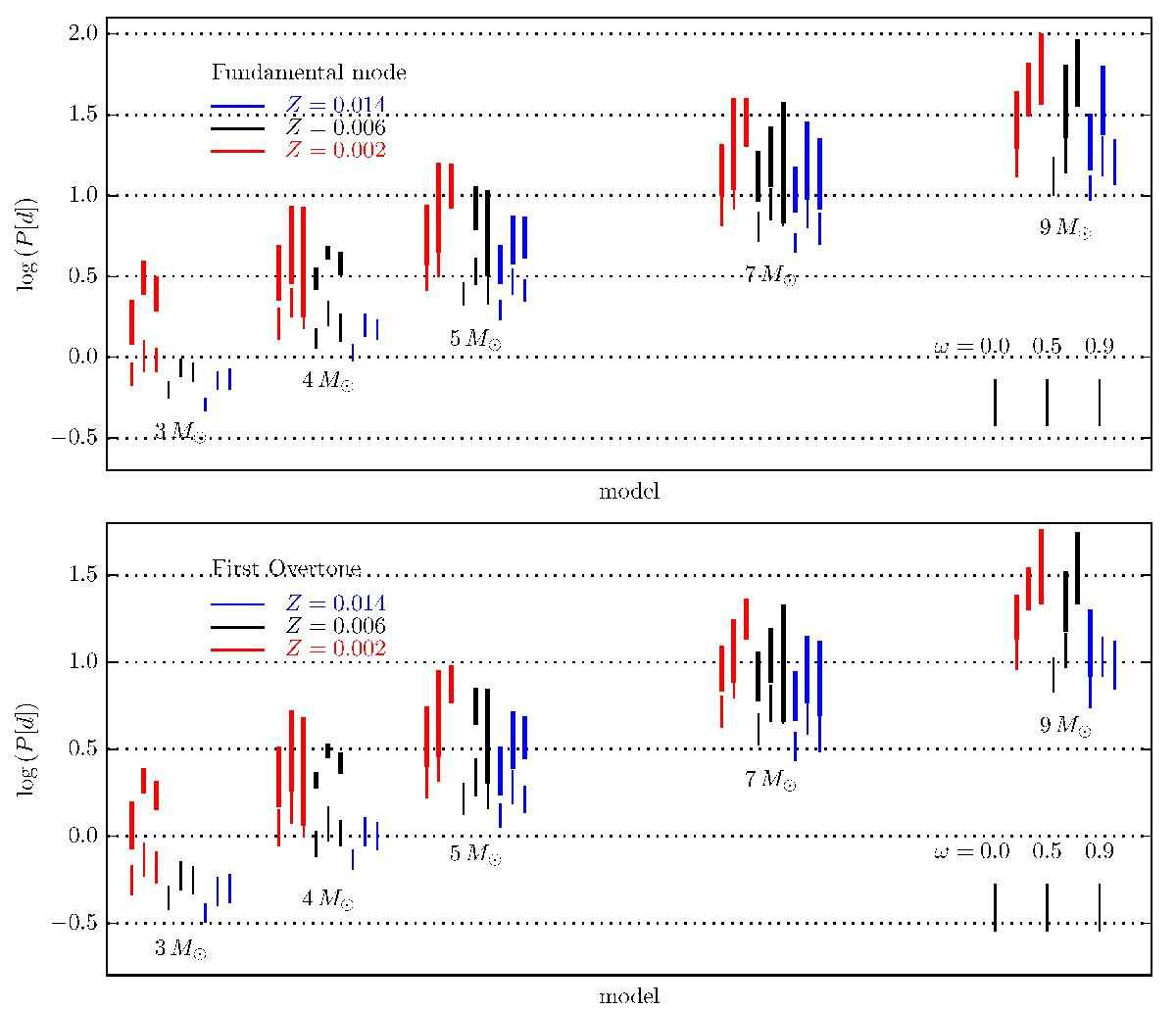Fig. 5

Predicted period ranges for fundamental mode Cepheids (top) and first overtone Cepheids (bottom) as function of mass, metallicity, and initial rotation rate. Period ranges on the first crossing are shown with thinner lines than period ranges on 2nd and 3rd crossings. For each mass, we plot results for three different rotation rates (increase left to right) and three metallicities (increase left to right, see colors). For a given model mass, lower metallicity tends to increase pulsation period. Lower metallicity models, however, predict shorter minimum periods for Cepheids on 2nd and 3rd crossings due to longer blue loops.
Current usage metrics show cumulative count of Article Views (full-text article views including HTML views, PDF and ePub downloads, according to the available data) and Abstracts Views on Vision4Press platform.
Data correspond to usage on the plateform after 2015. The current usage metrics is available 48-96 hours after online publication and is updated daily on week days.
Initial download of the metrics may take a while.


